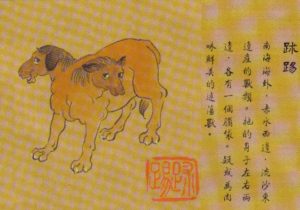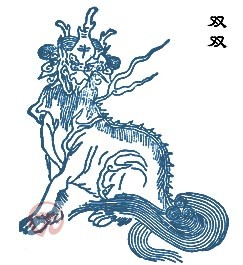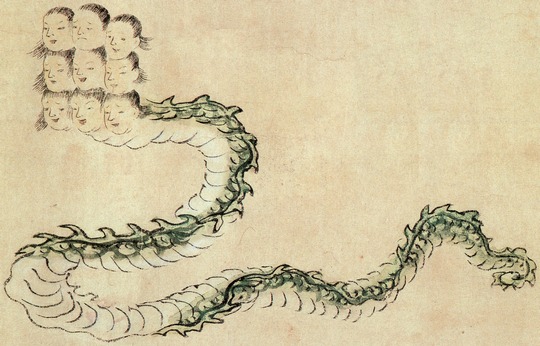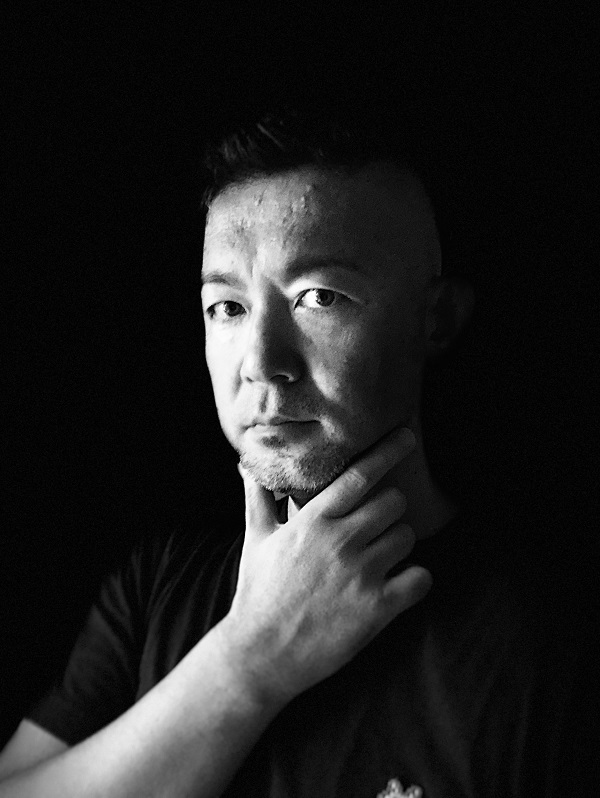Past and Future of Nippon Subculture ~No.7 Kaiju outlaw land PartⅠ~
皆様ご無沙汰しております。「縄文特別廻(第捌廻 / 第玖廻)」「TSUYOSHIさんインタビュー(近日公開)」を挿み、その後ズルズルと〆切を引き伸ばしていたら、正月も過ぎ、旧正月まで過ぎてしまいました。そんな感じでようやく「ニッポン・サブカルチャの過去と未来」の本筋に戻って来ました。ズルズルと〆切を引き伸ばしていたのは、多忙だったことが原因の一つでもありますが、今回からのテーマである“怪獣”が僕の中で重要なものであり、それについて書くのに中々重い腰をあげられなかったということも原因です。
It has been a while, everyone. After inserting the “Jomon special ~JOMON・Art・Subculture~ (➀ , ➁)” and “Interview with TSUYOSHI” (Coming soon), I had to keep pushing the deadline, and now New Year’s has come and gone, and even Chinese New Year has come and gone. So, I finally came back to the main point of Past and Future of Nippon Subculture”. One of the reasons for the long delay is that I have been very busy, but another reason is that the theme of this issue, “Kaiju” is an important one for me, and I have not been able to write about it.
ストレートにいうと僕がサブカルチャのジャンルの中で一番好きなのは「怪獣」です。丁度、今も(2月に執筆中)『大怪獣のあとしまつ』が良くも悪くもバズっています。違うジャンル、違う良さ、ということで比較するものでもないですが、どちらかと聞かれれば、ロボットより怪獣が好きです。親が買ったのか、子供時分の私がせがんで買ってもらったものなのかはわかりませんが「ウルトラマン前夜祭」(注①)なるLPレコードをもっていたのを覚えているし、自分で考えたオリジナル怪獣を描き貯めたノートを何冊も持っていた、今とやっていることが変わらない…いや今は子供頃にやっていたことに技術と理屈が負荷されただけです。多くの人がそうであるかもしれないが、ウルトラマンより怪獣の方が好き。ではなんで怪獣がそんなに心の琴線に引っ掛かり、引っかかったまま大人になってしまったか、という“負荷された理屈”の部分を考えていきたいと思います。
Straight up, my favorite genre of subculture is “kaiju“. Right now, (as I write, it is February), “What to Do With the Dead Kaiju?” is going viral, both good and bad. It’s not really comparable, but if you ask me which I prefer, I prefer monsters to robots!, although they are different genres and different goodness. I don’t know if my parents bought it or if it was something I begged them to buy for me as a child, but I remember having an LP record called “Ultraman eve” and I had many notebooks in which I had drawn and saved monsters of my own design. What I do now is no different…, now it’s just more sophisticated in technology and logics loaded onto what I used to do as a child. I prefer monsters to Ultraman, as many people may do. So I would like to consider the “loaded logic” part of why monsters tug at my heartstrings so much, and why I have grown up with them hooked.
さて(非常に乱暴にくくって)日本人に「怪獣」と言えば、なんとなく共通したイメージを思い浮かべると思います。それだけ『ゴジラ』や『ウルトラマン』の文化的なインパクトは大きかったわけですが、これについては後述します。“妖怪”の場合もそうでしたが、“怪獣”を英訳するのが難しい。直訳すればMonsterになりますが、それだと怪獣の意から零れ落ちてしまうものが沢山あります。日本文化オタクのギレルモ・デル・トロ監督が、映画『パシフィック・リム』の中でクリーチャーを“Kaiju”と呼び、映画『GODZILLA ゴジラ』(2014、ギャレス版)の中で渡辺謙氏が扮する芹沢博士がGODZILLAを「ゴジラ」と日本語発音で呼んでから、比較的英語圏でも怪獣は市民権を得てきているとは思いますが、言語というものは文化の反映なので、理解の深度はそうそう変わらないと思います。
Now (to put it very crudely), when you mention the word “Kaiju” to Japanese people, I think they will think of a somewhat common image. That is why the cultural impact of “Godzilla” and “Ultraman” was so great, but more on this later. As was the case with “yokai,” it is difficult to translate “kaiju” into English. The literal translation would be “monster”, but there are many things that fall outside the meaning of “kaiju”. Since Japanese culture geek Guillermo del Toro called the creature “Kaiju” in the movie “Pacific Rim”, and Dr. Serizawa played by Ken Watanabe in the movie “Godzilla” (2014, Gareth’s version), called GODZILLA with the Japanese pronunciation “go-ji-ra”, the monster has become relatively more civilized in the English-speaking world. However, as language is a reflection of culture, I do not think the depth of understanding will change that much.
私たちが持つ怪獣の共通イメージは現代のサブカルチャによって造られたものですが、では何が日本のサブカルチャ、怪獣をユニークな存在にしているのでしょう?結論から言ってしまうと、そしてそれはいつも同じなのですが、それは太古からあるアニミズム的感覚だと思います。僕はそれを「縄文的アニミズムの現代文化での噴出」と言っています。特に怪獣に対する「カッコイイ」という感覚は、自然の中で暮らしていた縄文人が感じていたであろう自然に対する畏怖と畏敬の念にその根っこがあると思っています。僕はサーフィンもするのですが、沖で波を待っていて向こうから大きな波のウネリがやってくるのを見た時に、肚(はら)のそこから湧いてくる「コワい」という感覚と高揚感が入り混じったもの、これが自然に対する畏怖と尊敬なのだと感じます。
The common image we (as mainly in Japanese) have of monsters is one created by the modern subculture, but what then makes the Japanese subculture and monsters unique? As it turns out, and it is always the same in my theory, it is an animistic sense that has existed since time immemorial. I call it “the eruption of Jomon animism in modern culture”. In particular, I believe that the sense of ” kakkoii (cool)” in regards to monsters has its roots in the sense of awe and reverence for nature that the Jomon people, who lived in the midst of nature, must have felt. I also surf, and when I wait for a wave offshore and see a big swell coming in from the other side, I feel a mixture of fear and excitement that comes from the bottom of my stomach. I feel this is awe and respect for nature.
縄文的アニミズムと書きましたが、アニミズムは日本だけのものではありません。僕が”縄文”と言う時、それは世界の様々なネイティブ/トライバルな文化に共通するアニミズム的感覚の日本的な表現を意味します。怪獣がどのように日本的なのかを理解するために、まずは「怪獣」という言葉を掘り下げ、そして世界の他の文化が怪獣的なものをどう扱っているかについて触れていきたいと思います。
I wrote “Jomon animism”, but animism is not exclusive to Japan. When I say “Jomon”, I mean the Japanese expression of the animistic sensibility common to various native/tribal cultures of the world. To understand how kaiju are Japanese-ish, I will first discuss the word “kaiju” and then how other cultures around the world treat kaiju-like objects.
さて、では「怪獣」という言葉の語源ですが、元々は字義のとおり、怪しい獣、正体のわからない生き物というものでした、UMA(未確認生物)ですね。世界的にみた初出は中国古代の戦国時代から秦代・漢代(紀元前4世紀~3世紀頃)にかけて段階的に編纂された『山海経』中で初めて現れます。山海経には中国の伝説に登場する神々から妖怪まで様々な怪獣的な存在が記述されています。ここでは怪獣という言葉はどちらかと言えば“妖怪”的なニュアンスかと思います。
So, let’s look at the origin of the word “kaiju (monster)”, which literally means “suspicious beast” or “unidentified creature” (UMA). The first appearance in written material worldwide is in the ”Classic of Mountains and Seas”, compiled in stages from the 4th to 3rd centuries B.C. in ancient China. It describes a variety of monstrous beings, from gods in Chinese legends to ghosts. Here, the word “kaiju” is more like “yokai” in nuance.


中国の奇書「山海経」の神獣60体を再現 北京の彫刻アーティスト
やはり大きな造形物は良い。それが自然の中に展示されていると更に良い
A sculpture artist in Beijing reproduces 60 divine beasts from a strange Chinese book, “Classic of Mountains and Seas”. (This site is in Japanese.)
After all, large sculptures are good. It is even better when it is displayed in nature.
日本の場合は、”阿部正信が1843年(天保14年)に編纂した駿河国風土記『駿國雑志』の巻第24下に所収の「怪異」の章の中に「狒々」の項目が有り「此怪獣は常に木皮と篠を好て喰へり」という説明文に怪獣という単語が使われている。また巻第25に「怪獣」という項目があり、有度郡小鹿村(現在の静岡市駿河区小鹿)の山中で村人に捕えられた「翼を持った猿のような動物」についての記載がある。(Wikipediaから抜粋)”とのことですが、これもやはりUMAや妖怪的な印象があります。やはり現代のサブカル的意味合いの「怪獣」という言葉が浸透するのは1954年(昭和29年)の『ゴジラ』を待つことになります(詳しくは後述)。
In the case of Japan, “Suruga Kuni Fudoki”, compiled by Masanobu Abe in 1843, has an article on “Hihi (baboons)” in the chapter “Kaii (strangeness)” in the last part of Volume 24, and the word “monster” is used in the description “This monster always likes to eat tree bark and bamboo”. Also, in Volume 25, there is a section titled “Kaiju”, which describes a “monkey-like animal with wings” captured by villagers in the mountains of Kojika, Suruga-ku, Shizuoka City, Shizuoka Prefecture at present. (Excerpt from Wikipedia)” This also gives the impression of a UMA or yokai-like creature. After all, the term “Kaiju” in its modern subcultural meaning would not become widespread until 1954’s “Godzilla” (talk more details in next episode).
怪獣のルーツを探るのに神話は欠かせません。巨人、半神、合成獣等々、世界中どの神話みても必ずと言っていいほど怪獣的な存在が登場し、まさに怪獣の宝庫です。全て挙げていたらそれで何冊か本が書けてしまいます。なのでここでは2つの条件をつけて神話の世界を探っていきたいとおもいます。
1つ目の条件は“大きい”ということ。怪獣=巨大であるという印象(ウルトラセブンに登場するダリ―等の例外もありますが)も、やはりゴジラやウルトラマンに登場する怪獣たちによって作りあげられた心的印象ですが、この印象がしっくりくるということは、やはりその印象がアーキタイプ(元型)、人間の心理/記憶に共通して刻まれた心的イメージに近いところにあり、そして、あくまで個人的感覚からの考察ですが、“大きい”、巨大であるということは自然、超自然に対する畏怖を具現化する異なる文化にも共通した手法なのです。
もう一つの条件としては、単純にヒトガタを大きくした巨人ではない、ということ。神話の中において巨人もまた異なる文化に共通する重要なファクターですが、この項では「怪獣っぽくない」ので除外させてもらいます。
Mythology is indispensable in the search for the roots of kaiju. Giants, demigods, composite beasts, and other monstrous beings can be found in every mythology around the world. It is truly a treasure trove of kaiju. If I were to list them all, I could write several books. Therefore, I would like to explore the world of mythology under two conditions.
The first condition is “large”. The impression that kaiju is huge (with some exceptions, such as the Dali in Ultra Seven) is also a mental impression created by the monsters in Godzilla and Ultraman. However, the fact that this impression fits well is because it is close to the archetype, a mental image engraved in the human psyche/memory, and, from a personal point of view, being “big” or “huge” is a common practice in different cultures that embodies awe of the natural and supernatural.
Another condition is that they are not simply giants with a larger human form. In mythology, giants are also an important factor common to different cultures, but in this section we will exclude them only because I feel they are not “kaiju-like”.
まずは怪獣の宝庫ギリシア神話をみてみましょう。ギリシア神話には、グリフォン、キメラ、メデューサ、ペガサス、ヒドラ、等々、現在のRPG、ファンタジー創作物に登場する怪物/怪獣の元ネタが数多く登場します。その中でも最大最強の怪獣は「テュポーン」ではないでしょうか。なんと言ってもギリシア神話の主神であるゼウスを一度は敗北させています。(注②:ゼウスを破った詳細についてはこちらから)
First, let us look at Greek mythology, the treasure house of kaiju. Greek mythology is the source of many of the monsters and monstrous creatures that appear in today’s RPGs and fantasy creations, including the griffon, chimera, medusa, pegasus, hydra, and many others. The largest and most powerful monster of them all is probably the Typhon. After all, it defeated Zeus, the main god of Greek mythology, once.
(Note #2: For more information on defeating Zeus, click here.)
テュポーンは地母神にして原初の神ガイアがタルタロスとの間にもうけた怪獣/巨人/神です。ゼウスをはじめとするオリンポスの神々は、ガイアより二世代後の神々なので、テュポーンの方がより古層に属する神、怪獣と言えます。その容姿の描写は様々ですが、巨体は星々と頭が摩れるほどで、その腕は伸ばせば世界の東西の涯にも達した、といういうから無茶苦茶です。腿から上は人間と同じであるが、腿から下は巨大な毒蛇がとぐろを巻いた形をしているという。肩からは百の蛇の頭が生え、火のように輝く目を持ち、炎を吐いた。底知れぬ力を持ち、あらゆる種類の声を発することができ、声を発するたびに山々が鳴動したといいます。古代の壷絵では鳥の翼を持った姿が描かれていることもあります。
Typhon is a monster/giant/god created by the earth mother goddess and primordial god Gaia with Tartarus. Zeus and other Olympian gods are two generations later than Gaia, so it can be said that Typhon is a more primitive kami (God) or kaiju. Descriptions of its appearance vary, but it is absurd to say that its huge body is so large that its head could rub against the stars and its arms could reach the boundaries of the world’s east and west. From the thighs up, it is said to be the same as a human being, but from the thighs down, it is said to be shaped like a gigantic viper coiled in a coil. From its shoulders sprouted a hundred serpent heads, with eyes that glowed like flames, and it breathed fire. Possessing unfathomable power, it is said that he could speak in all kinds of voices, and that the mountains rumbled whenever he spoke. Ancient vase paintings sometimes depict him with the wings of a bird.

場所を古代中国に移してみましょう。前述した『山海経』に巨大な怪獣が多数登場します。相柳は九つの人間の頭を持った大蛇の怪獣と記述されています。九つの頭で九つの山を食べつくし、相柳の通過した跡は谷や沢に変貌してしまったということなので相当巨大な怪獣だったのでしょう。共工というこれまた人面蛇身の巨大な悪神に仕えており(”悪”というのも相対的な見方ですが)、体から毒水を出し、周囲の大地を汚染し天下を困らせていました。その血液は非常になまぐさく、英雄・禹に退治された時に流された大量の血液が広範囲の土地を汚染し農業などを不能にしたと言い伝えられています。ちなみに共工は古代中国の伝説上の皇帝や英雄たち、火の神とされる祝融、黄帝の子孫である顓頊、古代中国の太陽神だったとされる堯、等々に対して何度も乱を起こしています。顓頊に敗れた共工が,腹だちまぎれに不周山にぶつかり,天を支える柱が折れ,地をつなぎとめる綱が切れ,そのため天は西北に傾き,地は東南に傾いたというスケールの大きな伝説もあります。
Let us shift the location to ancient China. A number of giant kaiju appear in the aforementioned “Classic of Mountains and Seas”. Xiang-liu is described as a giant snake monster with nine human heads.
It must have been quite a gigantic monster, as its nine heads devoured nine mountains, and the traces of its passage were transformed into valleys and streams. He served a giant evil god named Gonggong, who also had a human face and serpentine body (“evil” might be a relative term), and his body emitted poisonous water that polluted the surrounding land, causing trouble throughout the world. His blood was extremely foul-smelling, and it is said that the large amount of blood spilled when he was vanquished by the hero U contaminated large areas of land, making agriculture and other activities impossible. Incidentally, Gonggong has repeatedly rebelled against legendary emperors and heroes of ancient China,Zhurong, who is considered the god of fire, Zhuanxu, a descendant of the Yellow Emperor, Emperor Yao, who is said to have been the sun god of ancient China, and many others. There is a large scale legend that Gonggong, defeated by Shokuyu, hit Mount Fushu in a fit of anger, breaking the pillar supporting the heavens and the rope holding the earth together, so that the heavens tilted to the northwest and the earth tilted to the southeast.
相柳や共工の存在は黄帝に属する系統と対立する者の代表と目された為に四罪の代表格・悪神のような扱われ方をされています。女媧の時代から神話上に時を越えて千年近くに渡り執拗に登場し続けては敗北をする悪神として描かれているのは、中原を本拠とした政権と長期にわたって敵対した羌族が共工を信奉していたためではないかとも考えられている。
Xiang-liu and Gonggong were regarded as representatives of those who opposed the Yellow Emperor’s lineage and were therefore regarded as representatives and evil gods of the four sins.The reason why they have been depicted in mythology since the time of Nüwa as evil gods who have persistently appeared and been defeated over time and for nearly a thousand years is considered to be because the regime based in Zhongyuan and the Qiang Tribe, which was a long-term enemy of the regime, believed in Gonggong.
次に本邦をみてみましょう。日本神話に登場する最大の怪物といえばやはり八岐大蛇です。『古事記』、『日本書紀』に登場する怪獣ですが、本来は山神または水神であり、八岐大蛇を祀る民間信仰もあります。
Next, let us look at Japan. The greatest monster in Japanese mythology is the Yamata-no-Orochi. Monsters appear in the Kojiki (Records of Ancient Matters) and Nihonshoki (Chronicles of Japan), but originally they were mountain gods or water gods, and there are also folk beliefs that worship the Yamata-no-Orochi.
古事記にみるヤマタノオロチのストーリーは以下のようなものです。
”高天原を追放された須佐之男命は、出雲国の肥河(島根県斐伊川))の上流の鳥髪(現・奥出雲町鳥上)に降り立った。箸が流れてきた川を上ると、美しい娘を間に老夫婦が泣いていた。その夫婦は大山津見神の子の足名椎命と手名椎命であり、娘は櫛名田比売といった。
夫婦の娘は8人いたが、年に一度、高志から八俣遠呂智という8つの頭と8本の尾を持った巨大な怪物がやって来て娘を食べてしまう。今年も八俣遠呂智の来る時期が近付いたため、最後に残った末娘の櫛名田比売も食べられてしまうと泣いていた。
須佐之男命は、櫛名田比売との結婚を条件に八俣遠呂智退治を請け負った。まず、須佐之男命は神通力で櫛名田比売の形を変えて、歯の多い櫛にして自分の髪に挿した。そして、足名椎命と手名椎命に、7回絞った強い酒を醸し、8つの門を作り、それぞれに酒を満たした酒桶を置くようにいった。準備をして待っていると八俣遠呂智がやって来て、8つの頭をそれぞれの酒桶に突っ込んで酒を飲み出した。八俣遠呂智が酔って寝てしまうと、須佐之男命は十拳剣で切り刻んだ。このとき、尾を切ると剣の刃が欠け、尾の中から大刀が出てきた。そしてこの大刀を天照御大神に献上した。これが「草那藝之大刀」(天叢雲剣)である。”
The story of Yamata no Orochi in the Kojiki is as follows.
Susano-no-Mikoto, banished from Takamagahara, landed at Torikami (now Torikami, Okuizumo Town), upstream from the Hiikawa (Hii River, Shimane Prefecture) in the Land of Izumo. When he went up the river from which the chopsticks flowed, he found an old couple with a beautiful daughter between them was crying.. The couple were Ashinazuchi and Tenazuchi, children of Oyamatsumino no Kami, and their daughter was named Kushinadahime.
The couple had eight daughters, but once a year, a giant monster with eight heads and eight tails named Yamata-no-Orochi came from Koshi and ate them. This year, as the time for the arrival of it approached again, the youngest daughter, Kushinadahime, who was the last remaining, cried that she too would be eaten.
Susanoo-no-Mikoto undertook to exterminate Yamata-no-Orochi on the condition that he marry Kushinadahime. First, Susanoo-no-Mikoto used his divine powers to change the shape of Kushinadahime, turning her into a comb with many teeth and inserting it into his own hair. Then he told her parents to brew a strong liquor, squeezed seven times, and to make eight gates, each with a bucket filled with liquor. As they were preparing and waiting, Yamata-no-Orochi came and plunged his eight heads into each bucket of sake and began to drink. As soon as it fell asleep, Susanoo-no-Mikoto chopped him up with a ten-fist sword. At this time, when the tail was cut, the blade of the sword was chipped and a large sword came out of the tail. This great sword was then presented to Amaterasu. This is the “Kusanagi-no-Tachi (Ame-no-Murakumo-no-Tsurugi).
出雲(島根県)は古代から鉄の産地であり、スサノオノミコトが降り立った斐伊川の”斐伊”は火の意で鈩にかかわる語。流域は鈩、鉄穴流しが盛んに行なわれていたそうです。ヤマタノオロチを切り殺しそこから後の三種の神器の一つである草薙の剣というアイテムを入手するというストーリは、ヤマト族より以前に出雲にいた製鉄の技術を持った部族を、後からきたヤマト族が征服したというストーリーにも読み解けます。
Izumo (Shimane Prefecture) has been a source of iron since ancient times, and “Hii” River, where Susanoo-no-mikoto landed, is a word related to fire and tatara.
*The tatara is the traditional Japanese furnace used for smelting iron and steel. The watershed is said to have been the site of a thriving iron pit sink. The story of his slaying of Yamata-no-Orochi, from which he obtained the item Kusanagi-no-Tsurugi, one of the later three sacred item in shintoism, can be read as a story of the conquest of a tribe in Izumo before the Yamato tribe, who had iron-making skills, by the Yamato tribe that came later.
ヤマタノオロチの8つの頭と8本の尾を持つというインパクトあるビジュアルは、そのままその後の日本のサブカルチャにおいても多々使用されることになります。東映動画長編第6作目のアニメーション作品「わんぱく王子の大蛇退治」はスサノオノミコトのオロチ退治をアニメーション化したもの。
The impactful visual of the eight heads and eight tails of the Yamata no Orochi would be used in many subsequent Japanese subcultures. Tōei Dōga’s sixth feature-length animated film, “Wanpaku Ōji no Orochi Taiji (The Little Prince and the Eight-Headed Dragon)” is an animated version of Susanoo no Mikoto’s extermination of Orochi.
1994年の日本映画『ヤマトタケル』にはツクヨミが変身した(!)ヤマタノオロチがラスボスとして登場します。ちなみに『ヤマトタケル』の謳い文句は「超時空SFアドベンチャー」で、神話を基にしつつも、独自のファンタジー要素を加えたエンターテイメント映画、テレビアニメや小学館『月刊コロコロコミック』で連載された漫画『ヤマトタケル』などと連動したメディアミックス企画として公開された作品です。
In the 1994 Japanese film “Yamatotakeru”, Tsukuyomi was transformed (!) Yamata-no-orochi appears as the last boss. Incidentally, “Yamatotakeru” is billed as a ” super space-time science fiction adventure,” an entertainment film based on mythology but with unique fantasy elements, and a media mix project released in conjunction with the TV anime and the manga “Yamatotakeru” serialized in the Shogakukan “Monthly Corocoro Comic”.
少し違いますが『ウルトラマンガイア』にもミズノエリュウという大地を司る守護神の龍(怪獣)が登場し、尻尾が8つの竜の頭になっています。
Although slightly different, “Ultraman Gaia” also features a dragon (kaiju) named Mizunoe Ryu, the guardian god of the earth, whose tail is the head of eight dragons.
”第参廻 カミガミの零落”の中でも書きかましたが、神話のより古層に属するカミ、怪獣には蛇(竜)に関連するものが多くみられます。縄文土器にはミズチ(蛇)のようにみてとれる文様が刻まれていることもあり、一説では蛇が脱皮を繰り返すことから、再生の象徴として信仰されていたのではないかという説もあります。一方、ざっくり縄文中期ごろと時を同じくする、いわゆる“古ヨーロッパ文明”においても、地上や空や雲の彼方に根源的な水域があり、そこには「鳥-女神」や「蛇-女神」の霊が漂っていると信じられていました。女神の住処は水面の底深く渦巻く迷宮の彼方にあり蛇=水鳥=女神の結合は、両義的な神を表そうとする古ヨーロッパのシンボリズムの特色です。しかし残念ながら前4000年期、インド=ヨーロッパ語族が、西ウクライナ、モルダヴィアおよびドナウ河流域のほぼ全域に侵入したあと、ヨーロッパ中東部では、偉大な女神の伝統は途絶えてしまいます。神話の中に登場する怪獣には、自然に対する畏怖と共に、征服者=正史を作った人々より以前にいた人々の文化が見え隠れしています。
As mentioned in “~No.3 The Fall of Kamigami ~“, many of the more ancient mythological kami and kaiju are related to serpents (dragons). Jomon pottery is sometimes inscribed with a pattern that looks like a mizuchi (snake), and one theory is that it may have been believed to symbolize rebirth, since snakes repeatedly shed their skin. On the other hand, in the so-called “Old European Civilization,” which roughly coincides with the mid-Jomon period, it was believed that there were primordial regions of water beyond the ground, sky, and clouds, where the spirits of “bird-goddesses” and “snake-goddesses” were floating around. The goddess’ abode is beyond the labyrinth that swirls deep beneath the surface of the water, and the combination of snake = waterfowl = goddess is characteristic of Old European symbolism, which attempted to represent an ambivalent god. Unfortunately, the tradition of the great goddesses ceased to exist in Middle-Eastern Europe after the Indo-European language tribes invaded Western Ukraine, Moldavia, and nearly all of the Danube basin in the 4th millennium BCE. The monsters in the myths, along with the awe of nature, reveal the culture of those who were there before the conquerors-the people who created the official history.
怪獣のルーツをさらっと見渡してみるだけで結構なヴォリュームになってしまいました…。次回からはいよいよ現代のジャパニーズ・サブカルチャにみる怪獣について話していきたいとおもいます。お楽しみに。
It took so much word count just to quickly look at the roots of kaiju. I would like to talk about kaiju in modern Japanese subculture in the next episode. Please look forward to it!!
注①:うろ覚えの記憶をたよりに検索した結果、おそらく「サウンド・ウルトラマン!」というLPレコード。”大人気番組だった「ウルトラQ」(モノクロ製作)。その後番組として「ウルトラマン」は円谷プロ初のカラー特撮番組として企画されました。そして「ウルトラマン」の第1話の放送開始は1966年7月10日と決まりました。本来予定されていたのは7月17日からでしたが、「ウルトラQ」の放送を一本見送り、1週間前倒しとすることが急遽決まったのです。しかし製作上の遅れから第1話の完成品納品が7月10日に間に合わない可能性が出てきたため、急遽舞台公開イベントを開きその模様を「前夜祭」として録画中継により放送することで1週間の時間稼ぎをしようと企画されたものです。”等を収録したもの。
詳細はこちら
#Note 1 : I searched from a hazy memory, probably a LP record called “Sound Ultraman!”. “Ultra Q” (produced in black and white) was a very popular program. As a follow-up program, “Ultraman” was planned as Tsuburaya Productions’ first color special effects program. The first episode of “Ultraman” was then set to begin airing on July 10, 1966. The original schedule for “Ultraman” was from July 17, but it was suddenly decided to postpone one of the “Ultra Q” broadcasts and move it up one week. However, due to production delays, there was a possibility that the first episode would not be delivered in time for July 10, so an open stage event was held in a hurry, and the event was planned to be broadcast live as a “pre-event” to buy a week’s worth of time.” The film includes these events.

小林 武人 ポストデジタル・アーティスト
Taketo KOBAYASHI Post-digital artist
ARTSTATION
Taketo Kobayashi (artstation.com)
Instagram ID
@humanoise
NPO法人JOMONISM 代表
https://humanoise.artstation.com
慶應義塾大学 環境情報学部卒。東京工科大学クリエイティブ・ラボ、株式会社ゴンゾを経てフリーランスに。現在は“ポストデジタル・アーティスト”として、CGや3Dプリント等のデジタルツールを“筆”として使いこなし、立体作品から映像まで幅広く制作。海外でも積極的に活動しており、美術家 坂巻善徳 a.k.a. senseとのコラボレーションプロジェクト“XSENSE”では、デジタル作品をストリートアートに活かし、ミューラル(壁画)を制作(コロラド州、デンバー)。また、独自の世界観のアニメーションを舞台美術として使い、コンテンポラリー能劇団とコラボレーションで公演も行った(サンフランシスコ、デンバー)。
自身の作品制作の他に、NPO法人JOMONISMが行う”ARTs of JOMON”展のキュレーションも担当。縄文文化から影響を受けた現代美術作家を世界に紹介し続けている(青森県立美術館、スパイラルガーデン、デンバー国際空港、クアラ・ルンプール等)。
目に見えないモノ、感情、エネルギー、意識の次の次元…等をカタチにすることがミッション。
現在はシンガポール在住
After having experience of 3D graphics and animation at Tokyo Institute of Technology creative laboratory, and Gonzo Co., Ltd., Taketo started his own project as an artist. Using digital technology like CG, 3D printing as his “brush”, Taketo creates a wide variety of artworks from 3D printed sculpture to animation. In a collaboration project XSENSE, Taketo utilizes CGI in street art to create murals(Denver, CO, USA), also using his unique style animation for stage design and collaborated with contemporary Noh theatrical group. In addition to creating his own artworks, Taketo curates the group art show “ARTs of JOMON” hosted by Japanese non-profit JOMONISM, keep introducing contemporary artists/artworks influenced by ancient Japanese Jomon culture.(Aomori Museum of Art / Spiral Garden / Denver International Airport / Kuala Lumpur)
It is Taketo’s mission to make invisible things, emotions, energy, next dimensions of consciousness into “shapes”.
職歴・作品履歴(抜粋)
2004年
TVアニメーション「岩窟王」:背景デザイン、モデリング担当
2005年
スズキ「バーグマン」WEBプロモーション:バーグマン、モデリング担当
2007年
NHK アニ・クリ「火男(ヒョットコ)」:デザイン、モデリング担当
2012年
「MYSTICAL ABYSS」
アメリカ、サンフランシスコ、コンテポラリー能劇団Theatre of Yugenの公演、Mystical Abyss でオリジナルアニメーション制作、ライブプロジェクション担当
2013年-
アメリカ、デンバー、Art Across Cultures, Hope Onlineなどと共同で公演に参加。デンバーアート・ミュージアム等でアニメーションのプロジェクションを担当
2014年
2月 NPO法人JOMONISM企画「ARTs of JOMON展」@青森県立美術館、キュレーション担当
5月 シンガポール南洋工科大学3DPコンペティション参加。カンファレンス招待
11月 企業コラボーレションアート参加:オークリーストア原宿店にて作品展示
2015年
1月 NPO法人JOMONISM企画「ARTs of JOMON展」@スパイラルガーデン、キュレーション担当
2017年
“ARTs of JOMON -Hyper Subculture-” 展 キュレーション担当
伊勢丹 the ジャパンストア、クアラルンプール、マレーシア
2018年
”YouFab Exhibition – Imagination Manifests”@青年廣場 HongKong “More Than Human”プロジェクト、3Dプリント義足を展示
2019年
グループ展『童心』出展 銀座ホワイトストーン・ギャラリー
2020年
「Lights to the Night」アーティストに選出。シンガポール、アジア文明博物館にプロジェクション・マッピング
受賞歴等
オリジナルアニメーション『祭』(2010)
シーグラフ・アジア アニメーションシアター入選
YAOYOROZシリーズ『薬師如来』(2013)
3Dプリント用3DCG作品。日本図学会モデリングコンテスト、入賞
『SC1-EXP』(2014)
3Dプリント作品に映像をプロジェクション・マッピングしたインタラクティブ作品。
逗子国際プロジェクション・マッピング・フェスティバル、グランプリ
More Than Human『type-Unicorn』(2015)
3Dプリント義足。Ufab Global Creative award、ファイナリスト
“Eisen Herz”(2016)
構造計算を用いた3Dプリントミニ四駆カヴァー
Ufab Global Creative award、ファイナリスト
Project/Art history(excerpt)
PROJECTS Digital G-O-D, UltraSuperNew gallery, Singapore, Jan 2020
Haw Par Villa RE•MIX
Chinese Cultural Centre, Singapore , Jan 2020
”Light to Night Festival” Projection mapping at Asian Civilization Museum, Singapore , Jan 2020
A SIGN OF THE TIMES EXHIBITION, Singapore , Jan 2019
”ARTs of JOMON” exhibit @ISETAN KL, Malaysia , Aug 2017, curation&direction
“Colorado Crush”, a mural festival in Denver, CO. Sept 2016, created artwork
“DMS” Collaboration with Canon June 2015, created&exhibited 3D printed prosthetic leg
”Oakley Exhibition” Exhibited artworks at Oakley store Harajuku, Tokyo, Oct 2014
AWARDS “Eisen Herz” Ufab Global Creative award Finalist. 2016. 3D printed cover for “Tamiya mini 4WD” using generative design
“More Than Human type-Unicorn” a 3D printed prosthetic leg. Ufab Global Creative award Finalist. 2015
“SC1-EXP” Zushi International Projection Mapping Competition, Grand Prix. 2014
“Yakushi-Nyorai”(2013)
3DCG model for 3D printing. Winning work at Digital modeling competition held by Japan Society for Graphic Science
Original CG animation ‘Matsuri’(May 2010)
Design, modeling, production coordination. A CG animation based on Japanese ‘Jomon’ culture. Created for promotion of Aomori Prefecture. Accepted at Siggraph Asia 2010. (On VIMEO: https://vimeo.com/25144961)